
© NASA
A Southern Delta Aquarid fireball streaks over one of the network cameras in July 2010: movie.
A Southern Delta Aquarid fireball streaks over one of the network cameras in July 2010: movie.
Every day about 100 tons of meteoroids -- fragments of dust and
gravel and sometimes even big rocks - enter the Earth's atmosphere.
Stand out under the stars for more than a half an hour on a clear night
and you'll likely see a few of the meteors produced by the onslaught.
But where does all this stuff come from? Surprisingly, the answer is not
well known.
Now NASA is deploying a network of smart cameras across the United States to answer the question, What's Hitting Earth?
Did that meteor you saw blazing through the sky last night come from the
asteroid belt? Was it created in a comet's death throes? Or was it a
piece of space junk meeting a fiery demise?
"When I get to work each morning and power up my computer, there's an
email waiting with answers," says William Cooke, head of NASA's
Meteoroid Environment Office. "And I don't have to lift a finger, except
to click my mouse button."
.Groups of smart cameras in the new meteor network triangulate
the fireballs' paths, and special software1 uses the data to compute
their orbits and email Cooke his morning message.
"If someone calls me and asks 'What was that?' I'll be able to tell
them. We'll have a record of every big meteoroid that enters the
atmosphere over the certain parts of the U.S. Nothing will burn up in
those skies without me knowing about it!"
In other U.S. meteor networks, someone has to manually look at all the
cameras' data and calculate the orbits - a painstaking process.
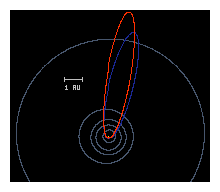
© NASA
The orbit of the Southern Delta Aquarid meteor (red) was a good match to that of the parent comet (blue).
The orbit of the Southern Delta Aquarid meteor (red) was a good match to that of the parent comet (blue).
"With our network, our computers do it for us - and fast," says Cooke.
The network's first three cameras, each about the size of a gumball
machine, are already up and running. Cooke's team will soon have 15
cameras deployed east of the Mississippi River, with plans to expand
nationwide2. Cooke is actively seeking schools, science centers, and
planetaria willing to host his cameras. Criteria are listed in the notes
at the end of this story.
In addition to tracking fireballs and their orbits, Cooke's system gives him other valuable information.
"It provides data on meteor speed as a function of size - and this is
critical to calibrating the models we use in designing spacecraft."
Meteorite hunters will reap benefits too. By determining a bright
fireball's trajectory through the atmosphere, the network's software can
calculate whether it will plunge to Earth and pinpoint the impact
location fairly precisely.
"And when we collect the meteorite chunks, we'll know their source. I
could be holding a piece of Vesta in my hand.3 It would be like a free
sample return mission!"
Opportunities like that, however, will be rare. "Most meteorites fall in
the ocean, lakes, forests, farmer's fields, or the Antarctic," says
Rhiannon Blaauw, who assists Cooke. "And the majority of those
meteorites will never be found. But our system will help us track down
more of them."
NASA's Smart Meteor Network is catching more than fireballs. In this movie, a bird stops to rest on one of the cameras in Georgia. Apparently, spiders like the cameras, too.
All cameras in the network send their fireball information to Cooke and to a public website.
Teachers can contact Cooke at William.J.Cooke@nasa.gov to request
teacher workshop slides containing suggestions for classroom use of the
data. Students can learn to plot fireball orbits and speeds, where the
objects hit the ground, how high in the atmosphere the fireballs burn
up, etc.
Cooke gives this advice to students and others who want to try meteor watching on their own:
"Go out on a clear night, lie flat on your back, and look straight up.
It will take 30 to 40 minutes for your eyes to become light adapted, so
be patient. By looking straight up, you may catch meteor streaks with
your peripheral vision too. You don't need any special equipment -- just
your eyes."
One more thing -- don't forget to check the website to find out what you saw!
In Case You Thought We Were Safe: Earth Under Threat From Dark Comets
Comets could be the most significant impact hazard to Earth, with sky
surveys underestimating the number that are potentially devastating by a
factor of between 10 and 100, British astrophysicists say.
Astronomers may be missing these so-called 'dark comets' because
their icy and reflective surfaces have become hidden under an obscuring
layer of dust.
Comment: We recommend reading the works of James
McCanney, especially his Plasma Theory of Comets, to understand that
comets are not "dirty snowballs" after all.
Near
Earth objects (NEOs) are comets or asteroids that have been nudged into
a possible collision path with the Earth. The international program to
discover NEOs; Spaceguard, which includes NASA's NEO program, has
identified around 6,000 NEOs so far, most of which are asteroids.
History of violence
But dark comets with unpredictable orbits may pose a greater threat than
asteroids, which are easier to spot, according to astrophysicists Bill
Napier, from the Cardiff Centre for Astrobiology in Wales, and David
Asher, from Armagh Observatory in Northern Ireland.
"We may be dealing with a population of dark objects, carrying a
lot of kinetic energy, which are not being properly picked up in the
Spaceguard surveys," the researchers write in the February issue of the journal Astronomy & Geophysics.
Some comets scoot into the range of Earth from near Jupiter or further
out, but appear regularly, like Halley's Comet. Others originate in the
distant Oort cloud, a spherical comet nursery predicted to exist around
one light-year from the Sun. These have orbits in the range of a million
years, and are harder to predict or to spot, especially if they are too
far away from the Sun to develop a characteristic comet tail as their
icy surface melts.
When the Solar System passes through the galactic plane - the
flattened disc of the Milky Way galaxy - molecular clouds may send
Oort cloud objects hurtling into the inner Solar System, said the
researchers.
Galactic mix-up
They say the timing of the Solar System's passage through the galactic
plane - around 20 to 30 million years - closely matches spikes in
the distribution of large impact craters on Earth for the past 250
million years. They conclude that comets have been responsible
for most of Earth's impact craters and may pose an unrecognised risk to
our civilisation.
Current NEO programs might be "monitoring a swarm
of bees while standing on a railway line with an express train due,"
says the study.
Drip, drip disclosure! NASA Scientist Claims Evidence of Alien Life on Meteorite
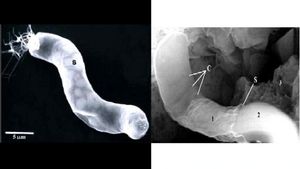
© Journal of Cosmology / Riccardo Guerrero / Richard B. Hoover
A
photograph taken through a scanning electron microscope of a CI1
meteorite (right) is similar in size and overall structure to the giant
bacterium Titanospirillum velox (left), an organism found here on planet
Earth, a NASA scientist said.
A
photograph taken through a scanning electron microscope of a CI1
meteorite (right) is similar in size and overall structure to the giant
bacterium Titanospirillum velox (left), an organism found here on planet
Earth, a NASA scientist said.
We are not alone in the
universe -- and alien life forms may have a lot more in common with
life on Earth than we had previously thought.
That's the stunning conclusion one NASA scientist has come to, releasing his groundbreaking revelations in a new study in the March edition of the Journal of Cosmology.
Dr. Richard B. Hoover, an astrobiologist with NASA's Marshall Space
Flight Center, has traveled to remote areas in Antarctica, Siberia, and
Alaska, amongst others, for over ten years now, collecting and studying
meteorites. He gave FoxNews.com early access to the out-of-this-world
research, published late Friday evening in the March edition of the Journal of Cosmology.
In it, Hoover describes the latest findings in his study of an
extremely rare class of meteorites, called CI1 carbonaceous chondrites
-- only nine such meteorites are known to exist on Earth.
Though it may be hard to swallow, Hoover is convinced that his findings
reveal fossil evidence of bacterial life within such meteorites, the
remains of living organisms from their parent bodies -- comets, moons
and other astral bodies. By extension, the findings suggest we are not
alone in the universe, he said.
"I interpret it as indicating that life is more broadly
distributed than restricted strictly to the planet earth," Hoover told
FoxNews.com. "This field of study has just barely been touched --
because quite frankly, a great many scientist would say that this is
impossible."
In what he calls "a very simple process," Dr. Hoover fractured the
meteorite stones under a sterile environment before examining the
freshly broken surface with the standard tools of the scientist: a
scanning-electron microscope and a field emission electron-scanning
microscope, which allowed him to search the stone's surface for evidence
of fossilized remains.
He found the fossilized remains of micro-organisms not so different from
ordinary ones found underfoot -- here on earth, that is.
"The exciting thing is that they are in many cases recognizable and can
be associated very closely with the generic species here on earth,"
Hoover told FoxNews.com. But not all of them. "There are some that are
just very strange and don't look like anything that I've been able to
identify, and I've shown them to many other experts that have also come
up stumped."
Other scientists tell FoxNews.com the implications of this research are
shocking, describing the findings variously as profound, very important
and extraordinary. But Dr. David Marais, an astrobiologist with NASA's
AMES Research Center, says he's very cautious about jumping onto the
bandwagon.
These kinds of claims have been made before, he noted -- and found to be false.
"It's an extraordinary claim, and thus I'll need extraordinary evidence," Marais said.
Knowing that the study will be controversial, the journal invited
members of the scientific community to analyze the results and to write
critical commentaries ahead of time. Though none are online yet, those
comments will be posted alongside the article, said Dr. Rudy Schild, a
scientist with the Harvard-Smithsonian's Center for Astrophysics and the
editor-in-chief of the Journal of Cosmology.
"Given the controversial nature of his discovery, we have invited 100
experts and have issued a general invitation to over 5,000 scientists
from the scientific community to review the paper and to offer their
critical analysis," Schild wrote in an editor's note along with the
article. "No other paper in the history of science has undergone such a
thorough vetting, and never before in the history of science has the
scientific community been given the opportunity to critically analyze an
important research paper before it is published, he wrote."
Dr. Seth Shostak, senior astronomer at the SETI Institute, said there is
a lot of hesitancy to believe such proclamations. If true, the
implications would be far-reaching throughout the fields of science and
astronomy, the suggestions and possibilities stunning.
"Maybe life was seeded on earth -- it developed on comets for example,
and just landed here when these things were hitting the very early
Earth," Shostak speculated. "It would suggest, well, life didn't really
begin on the Earth, it began as the solar system was forming."
Hesitancy to believe new claims is something common and necessary to the field of science, Hoover said.
"A lot of times it takes a long time before scientists start changing
their mind as to what is valid and what is not. I'm sure there will be
many many scientists that will be very skeptical and that's OK."
Until Hoover's research can be independently verified, Marais said, the
findings should be considered "a potential signature of life."
Scientists, he said, will now take the research to the next level of
scrutiny, which includes an independent confirmation of the results by
another lab, before the findings can be classified "a confirmed
signature of life."
Hoover says he isn't worried about the process and is open to any other explanations.
"If someone can explain how it is possible to have a biological remain
that has no nitrogen, or nitrogen below the detect ability limits that I
have, in a time period as short as 150 years, then I would be very
interested in hearing that."
"I've talked with many scientists about this and no one has been able to explain," he said.
Spectacular Russian rocket launch - more evidence of comet dust loading our atmosphere
Mon, 07 Mar 2011 04:28 CST
Kniall
Sott.net
Earlier today SOTT posted this video
of a rocket launch cum 'UFO spiral'. The person who uploaded it to
YouTube managed to convince him or herself that the spectacular display
was the result of UFOs "taking over control of the rocket" once it
reached a certain altitude. Well I've since located other videos of the
launch minus the misleading text and the "blinking lights" (which appear
to have been added later for effect, if not for outright disinformation
purposes). Here is a YouTube video entitled 'Launch of the Soyuz 2 rocket carrying Glonass-K satellite':
No blinking lights surrounding the rocket and no text to tell you it's
aliens from another planet taking remote control of it either.
Here's another video of the launch, this time amateur footage
taken from another location. At around 2:04', its exhaust trail begins
to light up:
I'm sorry to disappoint the True Believers out there but that is not
an "Alien Sky Torch"! Which is not to say that UFOs don't have a
history of buzzing rocket silos and military installations and that high
strangeness could well take place in and around rocket launches. But I
think you can see by comparing the doctored 'UFO Spiral' version of the
rocket launch with the above two that someone is trying to distract us
from something of far greater import.
The C's said in the February 13, 2011 session:
Q: (Perceval) The thing that we thought was a comet over Kazakhstan, was it a rocket from the Russians as reported?
A: No.
Q: (Perceval) Was it a comet?
A: Yes.
Q: (Perceval) It looked like a comet from what we know about comets.
A: Fragment. Expect a lot of the "rocket launch" excuses. If it was really a "rocket launch" they would have been able to announce it in advance.
I think in this case we can be pretty sure that the display
we're seeing is actually from a Russian rocket launch. The following is
Russian news footage from February 26th showing the launch from northern
Russia.
In any event, the launch was announced in advance.
Recall the buzz generated by the appearance of this spiral in late 2009, filmed off the coast of northern Norway:
It turned out to be a failed Russian Navy missile test. Not a wormhole. Not a UFO spiral. And definitely not an Alien Sky Torch!
The following footage was filmed over Sensey, Kazakhstan on June 30,
2009. I still haven't made up my mind just what it was, but it's pretty
similar to the latest launch video:
And here's an awesome display of what likely is cometary debris entering the atmosphere in late January this year:
Not easy to tell them apart, is it? If I'm on the right track here, then
it means SOTT also got this one wrong when we posted an earlier video
of the Glonass K-1 launch late last week and gave it the headline 'Comet Spiral Russia'.
Besides the spectacular displays these objects produce upon contact with our rapidly shrinking and cooling upper atmosphere,
the similarity of the trail left behind by the February 26 Russian
Glonass-K1 rocket (top photo above) with those of other rocket launches
is note-worthy:
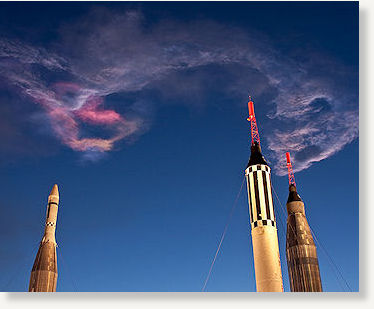
© Craig Crawford
The exhaust trail left by the Space Shuttle Discovery as it blasted off from Cape Canaveral in early April 2009
The exhaust trail left by the Space Shuttle Discovery as it blasted off from Cape Canaveral in early April 2009
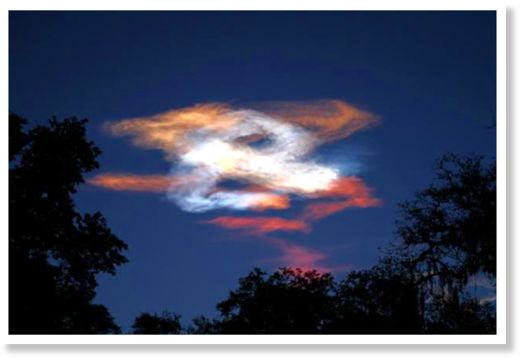
© Adam Bojanowski
Space shuttle launch April 2009: We can see now why the ancients described comets and fireballs as "dragons in the sky"
Space shuttle launch April 2009: We can see now why the ancients described comets and fireballs as "dragons in the sky"
What
I'm getting at is this: in all cases - be they rocket launches or
cometary arrivals - the amazing displays they're producing in the sky
are telling us something about the change of its composition. Laura
Knight-Jadczyk wrote recently about the smokescreen of chemtrails, most
of which are not chemtrails at all; the suspension of jets' contrails in
the atmosphere are another sign telling us that the very sky itself is changing.
Don't believe me? Take a look at this report of "two suns" appearing in China over the weekend:
No, it's not 'Nibiru' or any other celestial body; we'd have felt it
coming long before now if that were the case! I've heard some suggest
that it's a kind of 'sundog' which forms when sunlight refracts through
ice crystals and produces striking halo effects. This is what a sun halo
and accompanying sundogs at 22o looks like in its full glory (photo taken in Stockholm in early December 2010):
It's not an exclusively winter phenomenon. This was taken from Bournemouth in southern England in July 2010:
No,
I think the "two suns" is a 'mirage' effect of some sort whereby the
sun is being refracted by the changed atmosphere. That is, a combination
of possible comet dust loading and changes in the layers of the
atmosphere is producing all sorts of anomalous phenomena.
Whatever about 'sundogs', when have "two suns" ever been reported
before? This is very strong evidence for major changes in the atmosphere
and the question you've got to be asking yourself is, why?
Further reading:
Comets and Catastrophe Series
Cosmic Climate Change is Underway
'Mushroom-shaped light and loud boom' rocks remote Siberia
Sun, 06 Mar 2011 23:55 CST
YouTube
Ohio, US: Newark Police Puzzled By Mystery 'Boom'
Mon, 07 Mar 2011 14:33 CST
WBNS-10TV
Police were investigating the cause of a mysterious noise on Monday after multiple people reported hearing it and feeling it.
Residents living in the area of Idlewilde and Weiant avenues called
police on Sunday afternoon to report what sounded and felt like a loud
explosion.
The noise caused homes to shake, residents said.
Police and fire crews responded after several people called 911 to report the noise.
They were unable to find any sign of an explosion or what might have caused so many people to feel the shaking.
Watch 10TV News HD and refresh 10TV.com for additional information.
Fireball Over Italy - 8th March
A fireball reported over Italy. A still below from the video.
A flash video of the fireball can be viewed here.
Hawaii Astronomers Keep Tabs On Asteroid Apophis
Thu, 10 Mar 2011 20:07 CST
Space Daily
On
January 31 University of Hawaii at Manoa astronomers used the UH
2.2-meter telescope on Mauna Kea to take the first new images in over
three years of the potentially dangerous near-Earth asteroid Apophis as
it emerged from behind the sun.
The object became famous in late 2004, when it appeared to have a 1 in
37 chance of colliding with Earth in 2029, but additional data
eventually ruled out that possibility.
However, on April 13, 2029, the asteroid, which has a 900-foot
(270-m) diameter, will come closer to Earth than the geosynchronous
communications satellites that orbit Earth at an altitude of about
22,000 miles (36,000 km). Apophis will then be briefly visible to the
naked eye as a fast-moving starlike object.
This close encounter with Earth will significantly change Apophis's
orbit, which could lead to a collision with Earth later this century.
For that reason, astronomers have been eager to obtain new data to
further refine the details of the 2029 encounter.
Astronomer David Tholen, one of the co-discoverers of Apophis, and
graduate students Marco Micheli and Garrett Elliott obtained the new
images when the asteroid was less than 44 degrees from the sun and about
a million times fainter than the faintest star that the average human
eye can see without optical aid.
"The superb observing conditions that are possible on Mauna Kea made the observations relatively easy," said Tholen.
Astronomers measure the position of an asteroid by comparing with the
known positions of stars that appear in the same image as the asteroid.
As a result, any tiny error in the catalog of star positions, due for
example to the very slow motions of the stars around the center of our
Milky Way galaxy, can affect the measurement of the position of the
asteroid.
"We will need to repeat the observation on several different nights
using different stars to average out this source of imprecision before
we will be able to significantly improve the orbit of Apophis and
therefore the details of the 2029 close approach and future impact
possibilities," noted Tholen.
Apophis's elliptical orbit around the sun will take it back into the
sun's glare this summer, inhibiting the acquisition of additional
positions. However, in 2012, Apophis will again become observable for
approximately nine months. In 2013, the asteroid will pass close enough
to Earth for ultraprecise radar signals to be bounced off its surface.
Asteroid 2005 YU55 To Approach Earth Nov 8 2011
Thu, 10 Mar 2011 20:17 CST
Space Daily
Near-Earth
asteroid 2005 YU55 will pass within 0.85 lunar distances from the Earth
on November 8, 2011. The upcoming close approach by this relatively
large 400 meter-sized, C-type asteroid presents an excellent opportunity
for synergistic ground-based observations including optical, near
infrared and radar data.
An animated illustration by
JPL shows the Earth and moon flyby geometry for November 8th and 9th
when the object will reach a visual brightness of 11th magnitude and
should be easily visible to observers in the northern and southern
hemispheres.
The closest approach to Earth and the Moon will be respectively 0.00217
AU and 0.00160 AU on 2011 November 8 at 23:28 and November 9 at 07:13
UT.
Discovered December 28, 2005 by Robert McMillan of the Spacewatch
Program near Tucson Arizona, the object has been previously observed by
Mike Nolan, Ellen Howell and colleagues with the Arecibo radar on April
19-21, 2010 and shown to be a very dark, nearly spherical object 400
meters in diameter.
Because of its approximate 20-hour rotation period, ideal radar
observations should include tracks that are 8 hours or longer on
multiple dates at Goldstone (November 3-11) and when the object enters
Arecibo's observing window on November 8th.
Using the Goldstone radar operating in a relatively new "chirp" mode,
the November 2011 radar opportunity could result in a shape model
reconstruction with a resolution of as fine as 4 meters. Several days of
high resolution imaging (about 7.5 meters) are also planned at Arecibo.
As well as aiding the interpretation of the radar observations,
collaborative visual and near infrared observations could define the
object's rotation characteristics and provide constraints upon the
nature of the object's surface roughness and mineral composition.
Since the asteroid will approach the Earth from the sunward direction,
it will be a daylight object until the time of closest approach. The
best time for new ground-based optical and infrared observations will be
late in the day on November 8, after 21:00 hours UT from the eastern
Atlantic and western Africa zone.
A few hours after its close Earth approach, it will become generally
accessible for optical and near-IR observations but will provide a
challenging target because of its rapid motion across the sky.
Although classified as a potentially hazardous object, 2005 YU55 poses
no threat of an Earth collision over at least the next 100 years.
However, this will be the closest approach to date by an object this large that we know about
in advance and an event of this type will not happen again until 2028
when asteroid (153814) 2001 WN5 will pass to within 0.6 lunar distances.
US: Fireball UFO photographed in Illinois
Oswego,
Illinois resident Brandon Tudor photographed a fireball UFO in the sky
on Sunday evening. Tudor described the object as a ball of fire falling
towards Earth. According to the Beacon-News, the witness stated that the
object changed direction as it fell. Tudor also claims that he saw "two
jets fly into view and circle the area" after the UFO disappeared. He
took four pictures of the UFO on his iPhone before the object vanished.
Tudor took to the Internet to see if anyone else had seen the
UFO. He also made several phone calls. He even looked for answers on the
website AboveTopSecret.com, but he is still on the quest to discover
the identity of the UFO.
While other witnesses have yet to come forward, the object was also
witnessed by Tudor's daughter, who pointed to the sky and said, "I told
you aliens existed."
Illinois, US: UFO over Oswego? You've gotta see it to believe it
Fri, 11 Mar 2011 12:54 CST
Beacon News
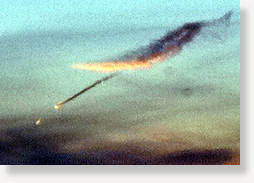
Brandon
Tudor and his 10-year-old daughter Elizabeth spotted a strange "flaming
object" in the evening sky as he was driving along U.S. Route 30 in
Oswego on Sunday,March 6, 2011. Tudor took these photos with his camera
phone.
Brandon Tudor swears he's not seeing things. And he's got his iPhone and 10-year-old daughter to prove it.
The young Oswego salesman and father of three was dropping Elizabeth off
at her mom's house in Lakewood Creek subdivision on Route 30 in
Montgomery early last Sunday evening when he spotted it in the western
sky.
It appeared to be a ball of fire falling toward earth at a 45-degree angle. Suddenly, he says, the flame extinguished and the trail of smoke changed direction, rising to a 30-degree angle.
Tudor had time to snap four pictures before the mysterious apparition
disappeared. Then, out of nowhere, father and daughter saw two jets fly
into view and circle the area.
Because he was now driving in the opposite direction, Tudor doesn't know
how long the planes were in the sky, but the brief episode was enough
to get the juices going.
"See, Mommy, I told you aliens existed," he recalled his
daughter saying when she reached home and pointed toward the sky.
Tudor, who admits he's a bit of a conspiracy theorist, went online
immediately and spent the rest of the week trying to figure out what the
heck he'd just witnessed.
Was it a meteor? He'd heard there was a green meteor shower taking place
from 6 to 9 p.m. that evening - but no way was it supposed to show up
in the earth's atmosphere.
Was it a test flight? Maybe a hobby rocket? Tudor called around to
several local clubs, but those groups told him they only perform flights
in summer. Besides, the description just didn't fit a rocket's
behavior.
Was it junk falling from a satellite? He checked out the Web sites that
list all the paraphernalia hanging above the Earth - but no match
there.
Intrigued even more, Tudor went to another Web site, abovetopsecret.com, and offered up this post:
I look up to see what appeared to be an asteroid on fire heading to
earth at about a 30 degree angle and south ... Maybe 1 or 2 towns over,
it was hard to tell the distance. It was on fire, went out, and then was
on fire again and then went out again. The second time it went out it
appeared to "pull up" and change course. Moments later two fast moving
jets flew by, spun around and flew by again.
Needless to say, "The UFO of Sorts, Oswego, Illinois," has generated
lots of suggestions from cyberspace - but Tudor still has no answers.
"I know what it isn't," he says of the fireball. "I just want to find out what it is."
He and his daughter saw the fireball around 5:30 Sunday evening - not
exactly rush hour. Still, Tudor insists there were enough cars on the
road that someone else had to have seen the same thing. Or, if you were
outside at that time in the subdivision, he insists, "you couldn't miss
it."
Here's my humble take on the whole thing: Don't call Brandon Tudor a
nut. Just call him if you, too, saw the strange apparition in the sky.
UFOs over the Fox Valley? Why not?
In our beloved Land of Lincoln, truth is always stranger than fiction.
Something is shaking the southeast, US: What is causing the 'booms'?
Something is shaking the southeast and has been for quite some time.
Carolina Beach resident Jody Smith was enjoying a Saturday morning with
her son Roman when she felt and heard a 'boom.' Her son walked to her
and asked, "Mommy, what was that?" Smith didn't know how to respond.
Many people in her neighborhood ran outside in hopes of finding the source of the noise.
"It feels like a Mack truck driving by and it just shakes your whole house," said neighbor Paula Powell.
"It's a shaking feeling," Smith added. "More than thunder and more than
a truck going by. Initially that is what it sounded like but it turned
into something more than that and I guess more movement. I went to
Facebook and I asked, 'Did anyone else just feel a small earthquake?'
And within minutes people were posting from all over town saying, 'I
felt it in Mayfaire,' 'I felt it in Pine Valley.'"
Dozens posted on her wall and thousands have reported
the noises up and down the coast on various websites from Georgia to
Virginia. With speculative explanations ranging from the ordinary, like
military aircraft to the outrageous like ghosts and aliens.
"I don't think it's ghosts, and I don't think it's aliens," said
Geophysicist Dr. David Hill with the United States Geological Service in
Menlo Park, California. "I think it's likely to be small earthquakes."
For nearly 50 years, Hill has studied just that across the globe, publishing more than 75 papers.
Hill
said an earthquake produces audible sound by making the "ground around
the person listening seem like they are in a big woofer."
"The ground is vibrating and that sound is transmitted up into the atmosphere and you hear a low rumbling sound," said Hill.
But on the east coast at the University of North Carolina Chapel Hill,
another prominent Geophysicist says earthquakes have nothing to do with
it.
"There are earthquakes occurring all around the world that we are
recording here in North Carolina," said Dr. Johnathan Lees. "If we had a
local earthquake it would be impossible for us not to record that."
Lees is also a life long student and teacher of sounds produced by the
earth. The professor at UNC says of all the loud booms heard, recorded
and studied there has never been any direct relationship discovered
between any seismic activity.
"It's just very unlikely that we could have humans observe this and not
have our very sensitive instruments making these observations," said
Lees.
But Hill strongly disagrees saying, "Magnitude twos and smaller could
produce an audible sound that and shaking that wouldn't be recorded on
the seismic stations."
Lees
thinks the sounds are something more secretive like military activity.
There are a number of aircraft and submarine testing and bombing ranges
off the coast stretching from Florida to New Jersey, with more than a
dozen off the Carolina coastline. And supersonic flight can certainly
make a boom.
But no military instillation is taking credit for the booms, and no exercises were scheduled at the time.
"We know that these things were reported long before people were flying around at the speed of sound," Hill pointed out.
In fact the term Seneca Guns, which is often used to describe these
sounds comes from a James Fenimore Cooper story explaining the same
phenomenon published in 1851, 50 years before man even learned to fly.
None the less, if it was an earthquake that rattled Smith's house there
is no seismic evidence. Perhaps because of the lack of seismometers in
the eastern half of the Carolinas.
"It just doesn't make sense how nothing could show up," said Smith as
she plays with her son Roman. "How could nothing at all show up if all
these people definitely felt and heard something that wasn't thunder
that wasn't a plane and wasn't a truck driving by the house?"
Smith asks questions that even the most experienced scientists can't
agree on an answer. Both Geophysicist, however, say you could eliminate
some theories by installing a seismometer and sensitive microphones
along the Carolina coastline.
But, since the booms do little more than rattle windows finding someone
to foot the$10,000 to $20,000 bill in our current economy will likely
keep the public guessing as to what is causing the mysterious booms.
Leaving folks like Smith to wonder and think, "it's just bizarre."
Flashback:
Southeast, US: Mysterious booms rock Cape Fear region
Fri, 08 Feb 2008 00:00 CST
Star-News
Loud booms rocked Brunswick, New Hanover and Pender counties starting about 6:40 p.m. today.
Callers from Oak Island, Leland and Supply told the Star-News
they heard the booms and felt strong vibrations. One man said he thought
his beach-front home was collapsing. Another said it shook her whole
house.
A meteorologist at the National Weather Service office in Wilmington
said reports of the booms or vibrations were widespread, coming from
Rocky Point in Pender County to Leland in Brunswick County.
The Brunswick County 911 center's switchboard lit up with calls from people reporting explosions or loud booms.
A dispatcher said the center had not confirmed the source of the loud noises.
Although a dispatcher at the New Hanover County 911 center said the center had received no such calls, a Star-News staffer who lives in the Sunset Park neighborhood of Wilmington said he heard the noise at his home.
Mysterious booms known as "Seneca Guns" have been reported in
the region for centuries. The name comes from a similar phenomenon in
New York and Connecticut.
Legend has it that the Seneca Indians are getting their revenge with the guns that Europeans used to displace them.
More scientific explanations say the boom of the guns comes from
earthquakes, material falling off the continental shelf, or pockets of
hot air exploding like balloons.
"We have no idea what it was," said Michael Ross, the meteorologist at
the weather service in Wilmington. "We felt the building kind of shake
for just a split second."
Ross said staff at the NWS office was keeping tabs on the National
Earthquake Center to see if there was a report of an earthquake in the
region, but none was reported.
Ross said he wasn't aware of any military maneuvers off the coast, which
occasionally is spotted on NWS radar when aircraft drop material to
confuse enemy radar systems.
Calls to the public information office at Cherry Point Marine Corps Air Station in Havelock were not answered.
Check back here for updates on this developing story.
UK: Unexplained Flash of Light and Bang Filled the Sky Above Paddock Wood
Bemused
residents are scratching their heads after the sound of a huge
explosion rocked Paddock Wood - but the cause remains a mystery.
Homeowners in the St Andrews area were gripped by confusion as a flash
of light filled the sky accompanied by an ear-splitting bang.
Police, the fire service, the Army, meteorologists and geological
experts have all been unable to explain the mysterious event last
Wednesday evening.
Warrington Road resident Val Dempsey told the Courier: "It was almost like a bomb had gone off."
Mrs Dempsey, 69, said she had been at home watching TV at about 7pm when she heard the noise.
It was so loud that a string of curious residents emerged from their houses to investigate further.
She added: "It was quite dark so no one could see much then but everyone had heard the same noise.
"I wondered if there had been a crash between two large vehicles or something like that."
Nearby Ashcroft Road resident Sam Dennis, 29, had been on his driveway
working on his car and, even over the music from his stereo, he had
heard the bang.
"It shook me up all right," he said. "I thought it might have been a plane crashing or something.
"The light was almost like lightning. It was pretty spooky."
Police were called but couldn't find the source, and firefighters had no record of an incident.
The possibility of a sonic boom, which is caused by a jet breaking
through the sound barrier, was also mentioned but Davie Galloway, of the
British Geological Survey, said: "I can inform you that there was no
evidence of a sonic boom or seismic disturbance of any kind detected."
The Ministry of Defence said there was not a military exercise in the
area at the time and Helen Chivers at the Met Office ruled out a
meteorological explanation, saying: "The weather was calm and cold with a
little cloud around and would not have resulted in the reports you're
investigating."
Nearby events venue The Hop Farm also said it was not responsible.
Intrigued marketing manager Jacqui Curtis said: "We had no functions on
March 2 and The Hop Farm was closed, so no fireworks from us."
Do you know what caused the noise? Contact the newsdesk on 01892 686951
Denmark: Museum is Hunting Fallen Meteorite
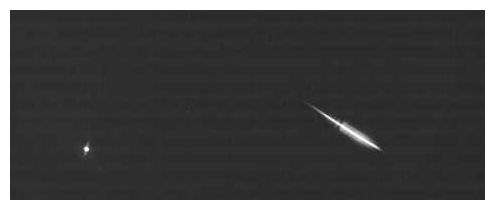
© Orion Planetarium
Here
is the meteor, as it was seen in the sky on Tuesday evening. The
Natural History Museum of Denmark would now like to know, where exactly
it landed.
Here
is the meteor, as it was seen in the sky on Tuesday evening. The
Natural History Museum of Denmark would now like to know, where exactly
it landed.
This article below which appeared in Danish, is translated by a SOTT forum member.
The Natural History Museum of Denmark is interested in hearing from witnesses who saw the meteor.
Several Danes saw on Tuesday evening, a burning meteor in the sky. It
was observed from different locations in Denmark and therefore the hunt
is now on for finding the meteorite, which possibly fell around
Silkeborg. A meteor becomes a meteorite when it hits the ground.
Via video recordings and eyewitness reports, the Geological Museum
department at the Natural History Museum, has worked out that an impact
happened Tuesday evening at 8 pm south of Silkeborg.
It is however sparse with information and the geological museum is
therefore asking people to report to them if they have seen or heard
anything in the evening sky.
Museum Seeks Jutland Witnesses
"A meteorite impact is rather unusual and if we find a meteorite, then
it might be able to teach us something new about how our solar system
came to be, " says Henning Haack, the curator of the meteorite
collection at the geological museum in a press release.
Until now the Natural History Museum has heard from witnesses from most
parts of the country, but is most interested in hearing from people in
the western and northern parts of Jutland, as it will then be able to
map out the trajectory of the meteor.
A fallen meteor at Maribo was found two years ago on the basis of reports of a loud boom.
Cities Around Silkeborg
According to the Natural History Museum, the greatest chances of
finding the meteorite or fragments of it will be around Silkeborg, Them
and Bryrup.
The best places to look for meteorites are flat areas with low or no
vegetation. One can furthermore look in gardens, on football fields,
fields, flat roofs and parking lots.
A meteorite can be recognised by being twice as heavy as a normal stone.
They have normally a black or brownish crust and to react to magnets.
If one is lucky enough to find the meteorite, then one should not touch it, but instead contact the museum.
Ephrata, Washington, US: Mystery Explosion In Moses Lake
Sun, 13 Mar 2011 17:50 CDT
KHQ
The cause of an explosion heard Saturday evening near Moses Lake remains a mystery.
Citizens called 9-1-1 around 8:30 p.m. Saturday reporting an explosion possibly in the area of the Moses Lake Sand Dunes.
Sheriff's deputies checked the area but were unable to locate
the source. As of today, the cause has still not been determined.
Texas, US: Widespread haze, smell of smoke in Lubbock a mystery
Sun, 13 Mar 2011 17:55 CDT
KCBD
Despite
a widespread haze and a strong smell of smoke across much of Lubbock,
the Fire Department said as of 5:00 PM that there was no fire in Lubbock
or Lubbock County. There have been reports of control burns in
neighboring counties.
At 4:45 PM the smell of smoke was strong near 34th and Milwaukee.
Viewers have also contacted KCBD NewsChannel 11 from the 200 block of
Milwaukee, the 5300 block of 19th and other areas in Northwest Lubbock.
Lubbock Fire Department dispatchers lost track of how many
people called in to report smoke but it was "quite a few." As a
precaution Lubbock fire dispatched engine companies to patrol their
territories and double check that there is no fire in town.
The specific source of smoke remained a mystery as of 5 PM Sunday
House-Size Asteroid Zooms Close by Earth
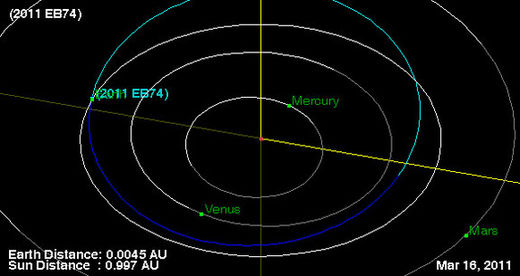
© NASA/JPL
This
NASA graphic depicts the orbit (blue curve) of asteroid 2011 EB47,
which will pass close by Earth within the orbit of the moon on March 16,
2011, one day after it was discovered. The asteroid poses no threat of
impacting Earth.
This
NASA graphic depicts the orbit (blue curve) of asteroid 2011 EB47,
which will pass close by Earth within the orbit of the moon on March 16,
2011, one day after it was discovered. The asteroid poses no threat of
impacting Earth.
An asteroid the size of a house
zoomed by Earth today (March 16), flying within the orbit of the moon
just one day after astronomers spotting the space rock in the sky, NASA
says.
The small asteroid 2011 EB74 was about 47 feet (14 meters) across and
posed no threat of hitting Earth, since it was too small to survive the
trip through the planet's atmosphere.
Instead, the asteroid passed our planet at a comfortable distance of
about 203,000 miles (326,696 kilometers) when it made its closest
approach at 5:49 p.m. EDT (2149 GMT), NASA officials said.
For comparison, the average distance between the Earth and the moon is
about 238,000 miles (382,900 km). The flyby of 2011 EB74 is about 0.85
Earth-moon distances, officials said.
Astronomers discovered asteroid 2011 EB74 yesterday (March 15) as part
of the ongoing Catalina Sky Survey, a project based at the University of
Arizona to seek out previously unknown near-Earth objects like
asteroids and comets.
NASA announced the asteroid's close flyby today on Twitter and
via an online widget used by astronomers with the agency's Asteroid
Watch program. The program aims to share news and updates about
asteroids and other near-Earth objects with the public.
"At 14 meters in size, 2011 EB74 is NOT considered a potentially
hazardous asteroid. Rocks this size would burn up in our atmosphere,"
Asteroid Watch officials wrote in a Twitter update.
The asteroid will likely be extremely hard to spot for skywatchers,
unless they are seasoned amateur astronomers and have the right
observing equipment, officials said.
"These objects are dark and fast, and usually require a sizeable
telescope to track," Asteroid Watch officials told one Twitter user.
Today's asteroid flyby is the latest space rock to fly near Earth this
year. A car-size asteroid buzzed Earth on Feb. 14. A tiny space rock set
a new record for the closest approach to Earth without entering the
atmosphere when it zipped within 3,400 miles (5,471 km) of the planet on
Feb. 4.
Like 2011 EB74, neither of those asteroid encounters posed a threat to Earth.
NASA astronomers and other scientists regularly monitor the skies to
hunt for asteroids or comets that may be an impact threat to Earth.
One such effort, which uses a telescope called Pan-STARRS PS1 in Hawaii,
set a new record this year when it discovered 19 previously unknown
asteroids in a single night on Jan. 29.
The Near-Earth Object program at NASA's Jet Propulsion Laboratory in
Pasadena, Calif., tracks potentially dangerous asteroids and studies
their orbits to determine if they pose a risk of hitting the Earth. The
Asteroid Watch program is an outreach arm of that effort.
Hyperactive Comet Hartley 2 Is a Spiky Mystery for Astronomers
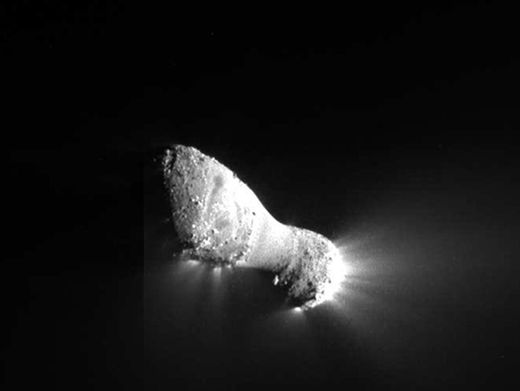
© NASA/JPL-Caltech/UMD
A
stunning close-up photo of Comet Hartley 2 from the Nov. 4, 2010 flyby
performed by NASA's Deep Impact spacecraft. This close-up view of comet
Hartley 2 was captured by the spacecraft's Medium-Resolution Instrument.
A
stunning close-up photo of Comet Hartley 2 from the Nov. 4, 2010 flyby
performed by NASA's Deep Impact spacecraft. This close-up view of comet
Hartley 2 was captured by the spacecraft's Medium-Resolution Instrument.
Houston
- Comet Hartley 2, the icy "space drumstick" photographed by NASA's
Deep Impact spacecraft last year, is an active object that still
perplexes scientists as it travels through the solar system.
Comment: Comets are NOT "dirty snowballs". Perhaps
the reason this comet (and all others) still "baffle" space scientists
is because they have no clue about the true nature of comets.
Deep Impact visited Hartley 2 in November, revealing what one scientist described as "our favorite little hyperactive small comet."
Hartley 2 rotates around a central axis much as Earth does, scientists
have revealed. But the comet also rolls around its long axis like a
spinning bowling pin. Make that a spiky bowling pin: The rough edges of
Hartley 2's surface are dotted with rocky spires that can reach 230 feet
(70 meters) high.
The new details about comet Hartley 2 were unveiled last week
at the 42nd Lunar and Planetary Science Conference in The Woodlands,
Texas. [Photos of Comet Hartley 2 Up Close]
Hartley 2 spews out more water than other comets its size, said Michael
A'Hearn, a University of Maryland astronomer and the principal
investigator on the flyby mission. Frozen carbon dioxide deep in the
comet's body turns to gas, jetting off the comet and dragging water with
it.
Comment: Comets do not "spew out" water. The
negatively charged comet nucleus (which is actually dry and hot) draws
in positively charged ions from the material in the solar disc. The
reason space scientists hypothesize the source for these gases is "deep
within" the comet is because they can't find the source of it. They're
looking in the wrong direction.
"There are at least a dozen other comets for which we know that
they're relatively high in activity for nucleus size, and they're
probably driven either by carbon dioxide or carbon monoxide," A'Hearn
told SPACE.com. "What we don't know yet it whether these are a separate
class or whether they're just a continuum extending from these more
'normal' comets."
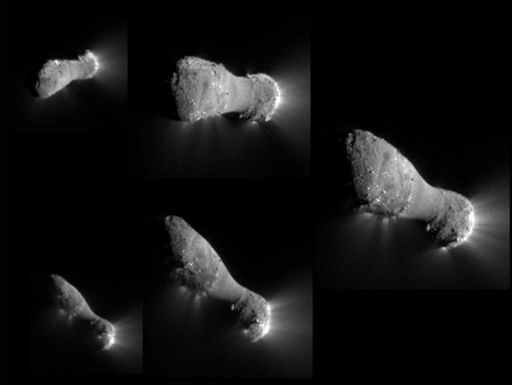
© NASA/JPL-Caltech/UMD
This
image montage shows Comet Hartley 2 as NASA's EPOXI mission approached
and flew under the comet. The images progress in time clockwise,
starting at top left.
This
image montage shows Comet Hartley 2 as NASA's EPOXI mission approached
and flew under the comet. The images progress in time clockwise,
starting at top left.
Spiky bowling pin
Deep Impact flew to within 435 miles
(700 kilometers) of Hartley 2 on Nov. 4, 2010, just a few weeks after
the comet had passed within 11 million miles (17.7 million km) of Earth.
Within hours, the craft, which is equipped with two cameras and a
near-infrared spectrometer, began beaming back about 125,000 images of
the comet, which has two rough, knobby ends and a smooth "waist."
Researchers aren't sure whether the two rough sides of Hartley 2 are
connected by solid rock. At least the outer layer - which is several
tens of meters thick - is a sort of loose aggregate of material that
sloughed off the comet and gathered there, A'Hearn said. [Video: Comet Hartley 2 Visit by Deep Impact]
Comment: The "loose aggregate", if it really is loose, is the dust cloud attracted to the charged nucleus.
The rough ends of Hartley 2 are dotted with spires and rocky blocks,
said Cornell University geomorphologist Peter Thomas, who analyzed the
terrain of the comet.
And although the comet is constantly throwing off particles as it nears
the sun, it lacks the pits and holes seen in other comets. In fact, some
parts of Hartley 2, including the spires, seem to get built up before
collapsing.
Comment: They don't just "seem" to get built-up. All comets attract material and build up in size.
"We've got an environment of material being moved around on the
surface, a sedimentary environment in an object that is losing mass,"
Thomas said.
Rough edges
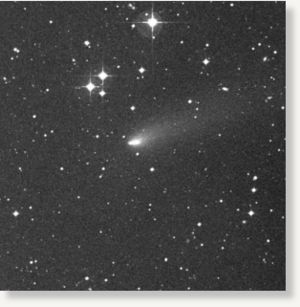
© ASA/JPL-Caltech, courtesy of AAO/SidingSpring
Discovery image of Comet Hartley 2, which Malcolm Hartley found in 1986.
Discovery image of Comet Hartley 2, which Malcolm Hartley found in 1986.
Hartley 2 throws off pure, fine-grained ice crystals, aggregated in fluffy chunks
as big as basketballs. But what you see coming off the comet depends on
where you look, said Lori Feaga, an assistant research scientist at the
University of Maryland. The smooth waist puts out more water than the
knobby ends, which seem to specialize in outgassing carbon dioxide.
"For the first time, we are able to show that sublimation of subsurface CO2
is actually driving the outgassing activity on a cometary nucleus,"
Feaga said, "and that the emission is directly linked to the [type of]
surface."
Because comets are leftovers from the formation of the solar system, the
differences in gas composition between regions of Hartley 2 have led to
speculation that the two nodes of the comet formed in separate areas of
the solar system.
"We would love to conclude that," A'Hearn said. But the team will need
to analyze more data before it can make any claims about the comet's
formation, he said
"We hope to be able to do that within six months or so," A'Hearn said.
US: Fire In The Sky Across Eastern Carolina
Calls and emails have been coming into the newsroom about a fireball streaking across the sky Tuesday night.
It appears what people saw was a meteor like the one in the picture accompanying this story, but maybe not quite as big.
We received calls emails and from people in Beaufort County, Kinston,
Camp Lejeune, and Winterville all describing the same thing around 7:30:
A blue-green fireball streaking across the sky towards the East until
it disappeared. No one reports hearing or seeing any impact.
We talked with the National Weather Service out of Newport where
officials say they have also had similar reports, but can't confirm for
sure that it was a meteor.
A meteor is a piece of rock or other debris from space that burns up as
it enters Earth's atmosphere. Because the objects are moving at many
thousands of miles per hour, they create friction with the atmosphere as
they enter and burn up.
If you happened to have seen the fireball streaking across the sky and
took any pictures we would love to see them You can email them to
Carolina Camera on our home page.
Decoded: 'The clay tablet that tells how an asteroid destroyed Sodom 5,000 years ago'
Sat, 31 May 2008 15:01 CDT
Daily Mail, UK
A
clay tablet that has baffled scientists for more than a century has
been identified as a witness's account of an asteroid that destroyed the
Biblical cities of Sodom and Gomorrah 5,000 years ago.
Researchers believe that the tablet's symbols give a detailed account of
how a mile-long asteroid hit the region, causing thousands of deaths
and devastating more than one million sq km (386,000 sq miles).
The impact, equivalent to more than 1,000 tons of TNT exploding, would have created one of the world's biggest-ever landslides.
Ancient record
Scientists claim the tablet, thought to be a 700BC copy from an even
earlier civilisation, describes how a mile-long asteroid hit the Earth
The Old Testament story describes how God destroyed the 'wicked sinners'
of Sodom with fire and brimstone but allowed Lot, the city's one good
man, to flee with his family.
The theory is the work of two rocket scientists - Alan Bond and Mark
Hempsell - who have spent the past eight years piecing together the
archaeological puzzle.
At its heart is a clay tablet called the Planisphere, discovered by the
Victorian archaeologist Henry Layard in the remains of the library of
the Royal Palace at Nineveh.
Using computers to recreate the night sky thousands of years ago, they
have pinpointed the sighting described on the tablet - a 700BC copy of
notes of the night sky as seen by a Sumerian astrologer in one of the
world's earliest-known civilisations - to shortly before dawn on June 29
in the year 3123BC.
Half the tablet records planet positions and clouds, while the other
half describes the movement of an object looking like a 'stone bowl'
travelling quickly across the sky.
The description matches a type of asteroid known as an Aten type, which
orbits the Sun close to the Earth. Its trajectory would have put it on a
collision course with the Otz Valley.
'It came in at a very low angle - around six degrees - and then clipped a
mountain called Gaskogel around 11km from Köfels,' said Mr Hempsell.
'This caused it to explode - and as it travelled down the valley it became a fireball.

© APEX
Biblical
proportions: Researchers claim the tablet is a witness's account of the
asteroid responsible for the destruction of Sodom and Gomorrah, as
described in the Old Testament
Biblical
proportions: Researchers claim the tablet is a witness's account of the
asteroid responsible for the destruction of Sodom and Gomorrah, as
described in the Old Testament
'When it hit Köfels it
created enormous pressures which pulverised the rock and caused the
landslide. But because it wasn't solid, there was no crater.'
The explosion would have created a mushroom cloud, while a plume of smoke would have been seen for hundreds of miles.
Mr Hempsell said another part of the tablet, which is 18cm across and
shaped like a bowl, describes a plume of smoke around dawn the following
morning.
'You need to know the context before you can translate it,' said Mr Hempsell, of Bristol University.
Geologists have dated the landslide to around 9,000 years ago, far
earlier than the Sumerian record. However, Mr Hempsell, who has
published a book on the theory, believes contaminated samples from the
asteroid may have confused previous dating attempts.
Academics were also quick to disagree with the findings, which were published in A Sumerian Observation of the Köfels's Impact Event.
John Taylor, a retired expert in Near Eastern archaeology at the British
Museum, said there was no evidence that the ancient Sumerians were able
to make such accurate astronomical records, while our knowledge of
Sumerian language was incomplete.
'I remain unconvinced by these results,' he added.
May 19, 1780: Darkness at Noon Enshrouds New England
1780: In the midst of the Revolutionary War, darkness descends on New
England at midday. Many people think Judgment Day is at hand. It will
be remembered as New England's Dark Day.
Diaries of the preceding days mention smoky air and a red sun at morning
and evening. Around noon this day, an early darkness fell: Birds sang
their evening songs, farm animals returned to their roosts and barns, and humans were bewildered.
Some went to church, many sought the solace of the tavern, and more than
a few nearer the edges of the darkened area commented on the strange
beauty of the preternatural half-light. One person noted that clean
silver had the color of brass.
It was darkest in northeastern Massachusetts, southern New
Hampshire and southwestern Maine, but it got dusky through most of New
England and as far away as New York. At Morristown, New Jersey, Gen.
George Washington noted it in his diary.
In the darkest area, people had to take their midday meals by
candlelight. A Massachusetts resident noted, "In some places, the
darkness was so great that persons could not see to read common print in
the open air." In New Hampshire, wrote one person, "A sheet of white
paper held within a few inches of the eyes was equally invisible with
the blackest velvet."
At Hartford, Col. Abraham Davenport opposed adjourning the Connecticut
legislature, thus: "The day of judgment is either approaching, or it is
not. If it is not, there is no cause of an adjournment; if it is, I
choose to be found doing my duty."
When it was time for night to fall, the full moon failed to bring light.
Even areas that had seen a pale sun in the day could see no moon at
all. No moon, no stars: It was the darkest night anyone had seen. Some
people could not sleep and waited through the long hours to see if the sun would ever rise again. They witnessed its return the morning of May 20. Many observed the anniversary a year later as a day of fasting and prayer.
Professor Samuel Williams of Harvard gathered reports from throughout
the affected areas to seek an explanation. A town farther north had
reported "a black scum like ashes" on rainwater collected in tubs. A
Boston observer noted the air smelled like a "malt-house or coal-kiln."
Williams noted that rain in Cambridge fell "thick and dark and sooty"
and tasted and smelled like the "black ash of burnt leaves."
As if from a forest fire to the north? Without railroad or telegraph,
people would not know: No news could come sooner than delivered on
horseback, assuming the wildfire was even near any European settlements
in the vast wilderness.
But we know today that the darkness had moved southwest at about 25 mph.
And we know that forest fires in Canada in 1881, 1950 and 2002 each
cast a pall of smoke over the northeastern United States.
A definitive answer came in 2007. In the International Journal of
Wildland Fire, Erin R. McMurry of the University of Missouri forestry
department and co-authors combined written accounts with fire-scar
evidence from Algonquin Provincial Park in eastern Ontario to document a
massive wildfire in the spring of 1780 as the "likely source of the infamous Dark Day of 1780."
Source: The Weather Doctor
1811-12 New Madrid Earthquakes, A NEO Connection?
Wed, 30 Nov 2005 02:12 CST
datasync.com
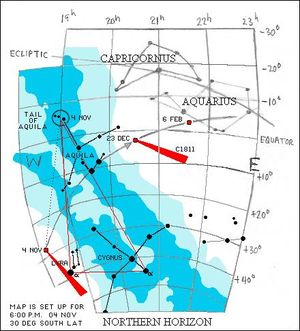
Partial
projected path of the Great Comet of 1811 with locations of Burchell's
comet and right triangle. Milky Way outlines are from Antonin Becvar's
Atlas of the Heavens
The New Madrid seismic zone
earthquakes of 1811-1812 may not have been caused by strictly
run-of-the-mill seismic activity. This is a study into the possibility
that some Near Earth Object (NEO), such as the "Great Comet of 1811",
was an outside-the-box crustal stressor. If a NEO involvement is found,
then some fear of the unknown about the timing of the next big one may
come to be dispelled. See Earthquake Liquefaction Safety.
The following paragraph is extracted from the "Great Comet of 1811" article referred to above.
On November 4, [William J.] Burchell (near the Vaal River about 50 miles
west of present day Kimberly, South Africa) wrote, "as I lay waiting
for sleep, and amusing myself in observing the constellations above my
head, I noticed a faint nebulous star of the third magnitude, which I
had not been used to see in that part of the heavens. Looking at it more
attentively, it appeared plainly to be a comet." He said it was located
in the tail of Aquila and formed a right triangle with Alpha Cygni and
Alpha Lyrae.
A portion of the path for the Great Comet of 1811-12, based on a
NASA JPL ephemeris, is shown on the image. (Go to NASA's Near Earth
Object Program and enter "C/1811 F1" as the search object.) Comet
positions are annotated for 04 Nov 1811, 23 Dec 1811 and 06 Feb 1812.
Note that Burchell's 04 Nov 1811 magnitude 3 comet in the tail of Aquila
is approximately 35 degrees SSE from the ephemeris position for C/1811
F1 (RA 18 11 17.37 Dec +28 10 05.3) on the same date.
In 1991 David Yarrow, editor of the Ratville Times,
reprinted Allan W. Eckhert's story(1) of the Shawnee Chief Tecumseh's
prophecy, and its fulfillment, of a catastrophic event/sign felt across
the North American continent on December 16, 1811. Eckert says the
event, which seems to have pointed to the 16 Dec New Madrid earthquake,
was preceded by a meteor-like preparatory sign which occurred 30 days
earlier.
A biography of Tecumseh(2) coincides with details in Eckhert's account but does not address any events of 1811-12.
One historical account pertaining to the New Madrid Earthquake(3) draws
attention to Tecumseh's prophecy about stamping his feet on a specified
date (December 16th 1811) to cause all the houses in an Alabama Indian
village to fall down. This account, although not as detailed as Allan
Eckhert's story above, seems to bear it out.
Smoking Gun (or Blowing Smoke)?
There were no known seismic foreshocks prior to the first shock of 16
Dec 1811 earthquakes(4). This, in itself may not be evidence of, but
could have been consistent with a meteorite impact. If so, where's the
crater?
Most everybody knows about the Barringer meteorite crater, safely
stashed away in the Arizona desert of the U.S.A., but they may tend to
dismiss the idea of meteorite impacts near what are now populated areas.
There is, however a growing body of information about heretofore
unrecognized meteorite impact structures in some of the funnest places.
[Added 07 Dec 2005.]
One
such long-unrecognized impact structure currently under study, is
located in southeastern New York state, some twenty miles WNW of
Kingston, NY, or 83 miles NW of New York City. The ten kilometer wide
structure, known as Panther Mountain (Great shades of Tecumseh!) is
currently estimated to be 375(*) million years old. The map on the left,
which shows this former crater (the rim has eroded) bracketed by two
other such structures, is copied with permission from Charles O'Dale's
Aerial Explorations of Terrestial Meteorite Craters webpage on the Panther Mountain Meteorite Crater.
(On the map, the location of New York City coincides with the top part
of the "P" in Panther.) [Added 07 Dec 2005. Updated 13 Dec 2005.] (*)
Thanks to Pat Yager for noting the 3.75 million years, instead of 375
million years "boo boo" in the age figure. [01 Feb 2006]
If you visit the O'Dale web page, be sure to scroll down to the Panther
Mountain Crater "Analog" on Mars section. It appears to show a central
circular plateau consisting of fill in sediments, encompassed by an
erosional depression, presumably where the former crater wall once
existed. Whether or not the Hatchie Coon flat can be considered as the
remains of a similar formation is a wild hairy speculation. [Added 14
Jan 2007.]
This 1994 quote by Kenji Satake
alludes to a meteorite impact caused tsunami. "Abnormal sediments in
Texas and Mexico have been interpreted to be tsunami deposits, apparently from a gigantic meteorite impact near Yucatan
at the Cretaceous/Tertiary boundary [Bourgeois, et al, 1988](5), when a
mass extinction took place. Study of deposits from recent tsunami
events will provide an important calibration to quantify such geological
studies." [Emphasis added.] [Added 11 Dec 2005.]
A modest sized meteorite crater, say a mile or so in diameter, located
in a swampy alluvial plain (such as that associated with the Mississippi
river back in the 1800s) might be rapidly obscured from casual view by
liquefaction, and tsunami-like river excursions associated with impact
aftershocks. [Added 07 Dec 2005.]
With reference to obscured craters in aluvial plains: A few years back,
in one of Saddam Hussien's public works projects, a swampy area in
southern Iraq was drained. In so doing, what appears to be a submerged
meteorite crater was found that is thought to date to about 2350 BC. It
is being hypothesized that the meteorite impact may have caused the
demise of some early bronze age (historical) civilizations. See the Cambridge Conference Network Summary. [Added 07 Dec 2005.]
The author of this webpage used Google Earth to search for the exposed
crater (Umm al Binni Lake) which, according to one source, is at 31 08
58 North 47 04 44 East, but he was unable to discern its presence. It's
reported to be about 45 miles south of Al'Amarah, Iraq, and 10 miles
northwest of the confluence of the Tigris and Euphrates rivers. The
Google Earth coordinates of Umm al Binni Lake are 31 14 26.5 North, 47
06 16 East. The lake is 28 miles (45 km) northwest of the confluence of
the Tigris and Euphrates rivers and 42 miles (67 km) south (about 190
degrees CW from north) of Al'Amarah. See Master and Woldai (2004) (6)
[Added 04 Jul 2008.]
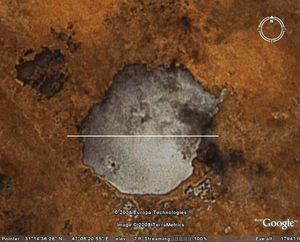
GoogleEarth satellite image of Umm al Binni Lake in southern Iraq. The ruler line represents a distance of two miles.
Where's the New Madrid Event Crater?
Readers may need to keep a salt shaker nearby.
The first jolt of the 1811 New Madrid quakes is thought to have been
centered near Marked Tree, AR. The region of Marked Tree would,
therefore, be a logical place to search for a meteorite impact
structure.
Just north of Marked Tree, AR there is a swampy region called the Saint
Francis Sunk[en] Lands. (The 1811-12 earthquakes are said to be
responsible for the sinking of the lands.) This particular swamp is fed
by the Saint Francis river.
In 1889, in the middle of the swamp, there there was a body of water
called St. Francis Lake. At that time it had a circular southern border
(which doesn't look like an oxbow feature) and a centrally located
island. The island is now known as Hatchie Coon Island.
The following map shows the features just discussed. Jonesboro, AR is
located in the upper left corner of the map, and the location for Marked
Tree, AR is annotated in the southeast corner.
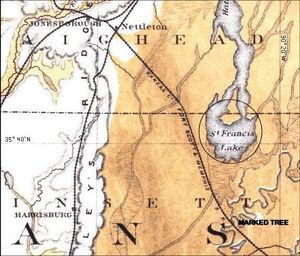
Saint
Francis Lake North of Marked Tree, AR, USA, 1889 This abbreviated map
is from a Northeast AR - Southeast MO map (Big!) Original map is at
University of Alabama Map Library. To see an outline of the former St.
Francis Lake overlaid
on a 1956 topo map of the area, goto St. Francis Lake.
The
author recommends, if it hasn't been done yet, that some organization
versed in meteorite impact structures examine the region of the former
St. Francis Lake to see if there are any indicators there consistent
with (or inconsistent with) a large meteorite impact. Anyone having
knowledge that this has already been done, whatever the final verdict,
please inform the author.
[Added 10 Dec 2005.]
One such (meteorite yes/no) indicator would be the forestry history of
the area. For example: If there are any trees within the confines of the
former St. Francis Lake and/or Hatchie Coon Island which were alive and
standing before, during, and after the winter of 1811-1812, then that
would be constitute evidence that St. Francis Lake was NOT caused by a
meteorite impact. On the other hand, if all the trees in the area came
to be there only after 1811, and not as a result of clear cutting and
replanting, then that would suggest a need to examine other possible
meteorite indicators. The author solicits inputs from persons who have
knowledge of publicly available written or photographic information on
this topic. [Added 26 Feb 2006.]
See a report
[under construction] regarding a field trip to the Hatchie Coon Island
area to make initial assessments of the above hypothesis. [Added 14 Jan
2007.]
The Great Comet of 1811
In 1893 Norbert Herz reported what seems to have been evidence of a
significant pertubation to the orbit of the Great Comet of 1811(7).
Quoting Herz: "In general, if a comet is not perturbed by external
forces, only one orbit, be it parabolic, elliptic, or hyperbolic, can be
derived from the observations [of the comet]. But a single curve cannot
be found for the comet of 1811 which will satisfy the observations."
Working from a total of 984 observations, Herz published monthly simple
means of the errors (between calculated and observed positions) but
didn't furnish indicators of maximum errors or of variances. The author
hopes to obtain a copy of the observations in order to produce a clearer
assessment of the comet's path. The idea is to see if Burchell's 04 Nov
1811 comet observation from South Africa (See second paragraph of this
article.) is consistent (or not) with vetted observations of C1811 F1.
Secondarily, it is desirable to look for a probable cause of the
pertubation to the Great Comet's orbit. [Added 12 Dec 2005.]
One possibile explanation for the fact that a single curve couldn't be
found for C1811 F1's orbit is that the comet fissioned and that one or
both of the fission products moved off in different orbits from the
original. John Kezys calls our attention to a report of such an event.
He says, "As Napoleon marched into Russia with an army of seven hundred
thousand strong, the Great Comet [of 1811] developed a tail one hundred
million miles long. Following initial victories Napoleon overextended
himself. After the invasion of Moscow he ran short of supplies and the
winter proved unforgiving. Hundreds of thousands died while the comet
performed frightening acrobatics by splitting in two."(8) [Added 12 Dec
2005.]
References
(1) Allan W. Eckhert, PANTHER ACROSS THE SKY - Tecumseh and the New Madrid Earthquake, December 16, 1811.
(2) Tecumseh 'The Panther Passing Across' Shawnee Warrior.
Was at: http://www.geocities.com/SouthBeach/Cove/8286/warrior.html. No longer available online.
(3) Nicholas Roosevelt's 1811 Steamboat New Orleans - Tecumseh and the Earthquake. The author quotes material from Thomas McKenney's History of the Indian Tribes of North America, (1838).
(4) A. C. Johnson and E.S. Schweig, (PDF) "The -Enigma of the New Madrid Earthquakes of 1811-1812". Annual Reviews Earth Planet, 24, 339-84, 1996. An abbreviated HTML version of this document is at http://www.showme.net/~fkeller/quake/lib/enigma.htm .
(5) Bourgeois, J., T. A. Hansen, P. L. Wiberg, and E. G. Kauffman, "A
tsunami deposit at the Cretaceous/Tertiary boundary in Texas," Science, 241, 567, 1988.
(6) Sharad Master and Tsehaie Woldai (2004), "The Umm al Binni
Structure, in the Mesopotamian Marshlands of Southern Iraq, as a
Postulated Late Holocene Meteorite Impact Crater: Geologic Settings and
New Landsat ETM+ and ASTER Satellite Imagery," Economic Geololgy
Research Institute Information Circular No. 282, Hugh Allsopp
Laboratory, University of the Witwatersrand, Johannesburg, SA. See:
(PDF) http://www.itc.nl/library/Papers_2004/tech_rep/woldai_umm.pdf
(7) Herz, Norbert, "Remarks on the orbit of the great comet of 1811 and on comet's tails," The Observatory, 16, 98-102 (1893).
(8) Kezys, John, "Napoleon's Comets," Orbit, Feb 1996, page 27.
See: http://www.rasc.ca/nl/hamilton-199603.pdf. [URL has changed or
article is no longer available] Kezys's source on this was Olson,
Roberta, Fire and Ice, A History of Comets in Art, Walker, ISBN 0802777838, page 76, (1985).
Related Links
How Dangerous are Earth-Crossing Objects? [Added 02 Jan 2006.]
Latest Update 23 Sep 2010 (New or recently modified material is in bold)
Large meteor seen across New Zealand
A meteor that illuminated the sky with a brilliant blue and white
light as it exploded over New Zealand last night was likely to have been
the size of a desk.
Reports of a bright flashing light in the sky about 11pm were received
from Auckland to as far south as Wellington while a sonic boom was heard
by many people near Raglan.
Stardome Observatory astronomer and Auckland Astronomical Society
president Grant Christie said that was likely caused by a large meteor,
or bolide, at least 1m in diameter.
He compared it to another meteor which caused shockwaves and knocked
people to the ground when it exploded at a height of 32kms over
Wanganui.
GNS Scientists later measured that explosion as having the same force as 350 tonnes of TNT.
"That was more powerful. It knocked people around a bit. But it occurred
at daytime. This one would have been more even more dramatic than that
because it happened at night."
While the 1999 meteor exploded at a height of 32kms, last night's meteor
would have burnt up at a significantly higher altitude, Dr Christie
said.
A meteor of that size was only likely to occur in New Zealand once every few years, he said.
Comment: By the look of it, and for quite a while now, these statistical chances are no longer relevant.
He had never seen one in his career and was calling for those who observed it to send in their reports to Stardome Observatory.
Depending on what the meteor was made up of, it could have been anywhere
from the size of a handbag to as big as a desk, Carter Observatory
programmes officer John Field told NZPA.
"These types of meteors are spotted around the world about once a day
and it's just a matter of being in the right place at the right time. It
was a lovely clear night last night and it was relatively early, so
many people would have seen it."
Eye-witness reports received by the WeatherWatch.co.nz website describe a very bright blue light which lit up the sky.
SETI Institute: How to Catch a Comet

© NASA, ESA, and H. Weaver and E. Smith (STScI)
A
NASA Hubble Space Telescope (HST) image of comet Shoemaker-Levy 9,
taken on May 17, 1994, with the Wide Field Planetary Camera 2 (WFPC2) in
wide field mode.
A
NASA Hubble Space Telescope (HST) image of comet Shoemaker-Levy 9,
taken on May 17, 1994, with the Wide Field Planetary Camera 2 (WFPC2) in
wide field mode.
Four and a half billion years ago, a
fluffy "snowball" coalesced out of the cloud of ice, dust and debris
still surrounding our Sun. Most of the snowballs like it later merged to
become the planets we know. This one, however, had a chance flyby with a
young planet, probably Jupiter. Jupiter's gravity propelled it out into
the far reaches of the Solar System, where it remained in deep freeze,
among many others like it, as a member of the so-called Oort cloud.
Eventually, the tug of gravity from a passing star slowed it down ever
so slightly, and that was enough to send it plummeting back toward the
Sun, into the region where it had formed billions of years earlier. By a
great quirk of irony Jupiter was again in its path. This time, the
planet's gravity captured it into a long, elliptical orbit. On July 7,
1992, it executed a cosmic hole-in-one, passing through Jupiter's
slender ring and breaking apart under the planet's ripping tides.
On the night of March 24, 1993, astronomers Eugene and Carolyn Shoemaker
and David Levy were searching the skies when they noted an oddly shaped
blotch near Jupiter. It was a comet to be sure, but quite unusual in
shape. The next morning it became known as Shoemaker-Levy 9, or SL9 for
short. With additional detections, its prior history as a body disrupted
by Jupiter became clear. As new data accumulated, however, SL9 became
even more remarkable, because astronomers realized that it had evaded
Jupiter for the last time. In July 1994, the world watched as the broken
fragments of SL9 plunged into Jupiter one by one. Few comets are ever
featured on the front page of the New York Times, but the July
19 headline read, "Earth-Sized Storm and Fireballs Shake Jupiter as a
Comet Dies." SL9 went out with a bang. The impacts left behind blotches
in Jupiter's clouds but, after a few months, they faded away. End of
story.
Or so we thought. As we have just published in the journal Science Express, this story has an unexpected epilogue.
To tell the rest of the story, however, requires a brief detour
to another planet, another spacecraft, and another decade. Cassini
arrives at Saturn in 2005, and begins sending back detailed images of
that planet's ring system. My colleague and co-author Matt Hedman scours
the images of Saturn's innermost ring and finds an obscure detail that,
notably, was not present in the Voyager images from 1980 and 1981. He
sees "ripples"--vertical corrugations in the ring plane, which repeat
every 30 km or so. We do not what to make of this pattern. After a few
years, however, we notice a trend: the ripples seem to be getting
shorter. Whatever they are, they are winding up like a watchspring. When
Matt plays the process backwards, we learn that the pattern began when
some "event" tilted Saturn's rings off their axis in late 1983. But what
could have caused such an event?
We had seen similar ripples exactly once before. The rings of Jupiter
showed vertical ripples when they were first imaged by the Galileo
spacecraft in 1996. At the time, we did not know what to make of this
pattern. Galileo never detected it again. Nor did New Horizons, a
spacecaft that flew by Jupiter in 2007 en route to its 2016 encounter
with Pluto.
But what if the pattern in Jupiter's ring was another winding
watchspring? I revisit the Galileo and New Horizons data with a more
open mind, searching for any pattern of any wavelength. Sure enough, the
watchspring pattern was in there after all, winding up tighter in each
detection. We had overlooked it previously because we were looking for
the wrong pattern. It is evolving in exactly the same way as the pattern
at Saturn. This means that, just like at Saturn, we can play the
process backwards. When we do, we determine that the rings of Jupiter
were tilted off their axis in mid-1994.
Why does this date sound so familiar?
Active comets are typically surrounded by clouds of fine dust, and the
Hubble images confirm that SL9 was very active. After many calculations
and numerical simulations, we have finally managed to show that, at the
same time that the large fragments were hitting Jupiter, SL9's dust
cloud missed the planet and carried enough momentum to tilt the entire
ring off its axis. SL9 seems to be our "smoking gun." Reasoning by
analogy, the event that tilted the rings of Saturn in 1983 was probably
also the impact of a comet.
The Jupiter data has shown us something else quite interesting. The
pattern produced by SL9 was only one of four different ripple patterns
detectable in the data. SL9 was not a freak event; comets hit the rings
of Jupiter maybe once or twice per decade, and the rings of Saturn
perhaps once or twice per century. As a bigger planet, Jupiter collects
more comets. SL9 was not unique, or even unusual.
I posed a question in the title; How do we catch comets? The short
answer is, with a really big net. Luckily for us, planetary rings serve
as the perfect nets. Our recent studies span decades, planets, and
spacecraft, but they tell a simple and unified story: comets hit rings;
rings get tilted; tilts become spirals. With the right observations, we
can now replay that history years and even decades later, just as if it
were embedded in the grooves on an old vinyl record.
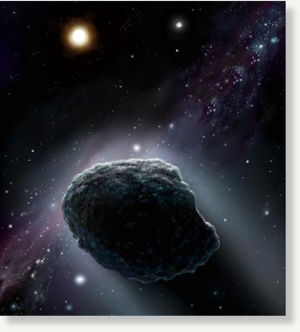
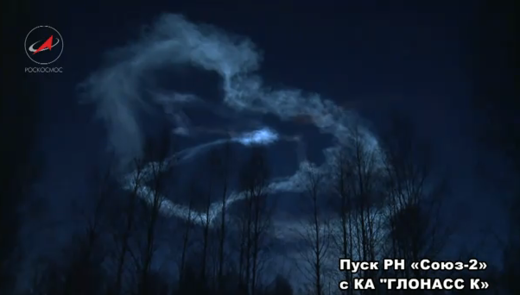
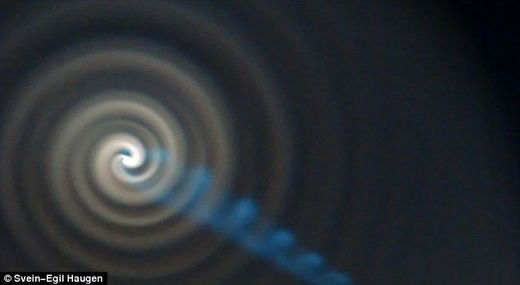
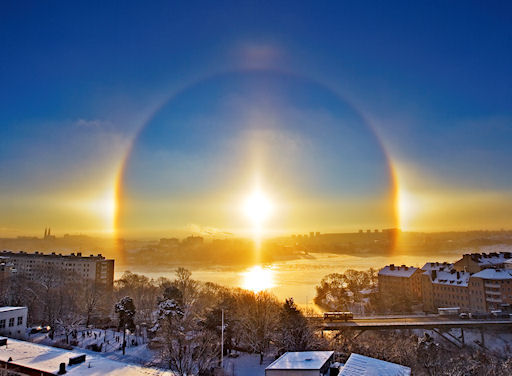
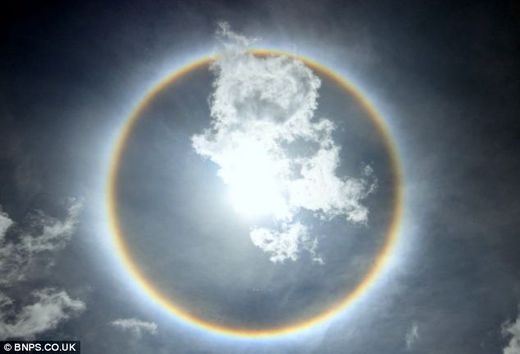
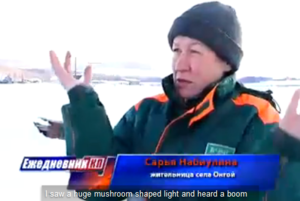
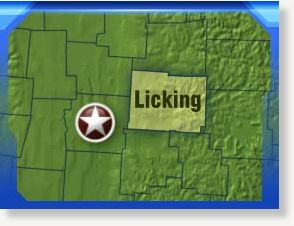
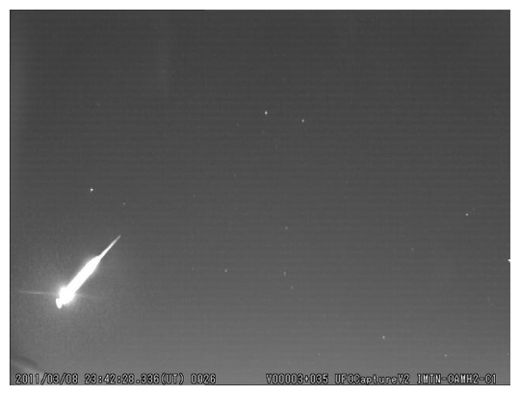
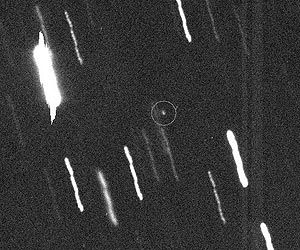
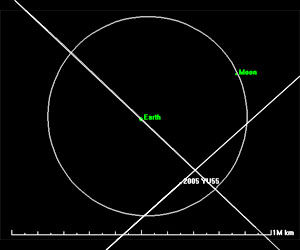
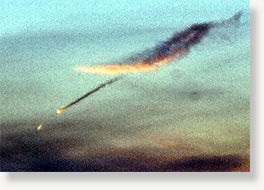
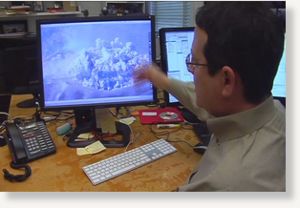
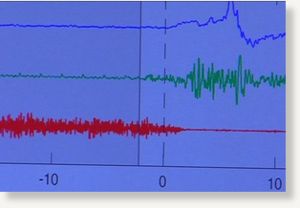
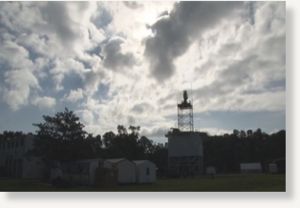
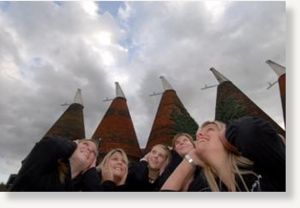

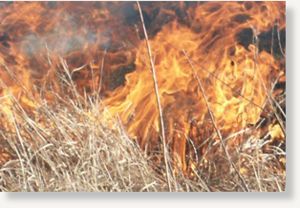
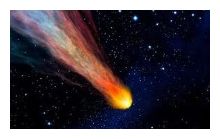
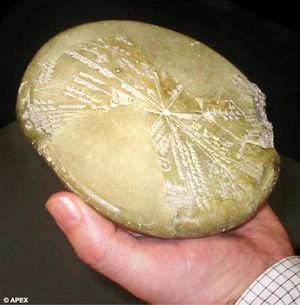
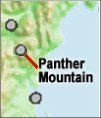
No comments:
Post a Comment